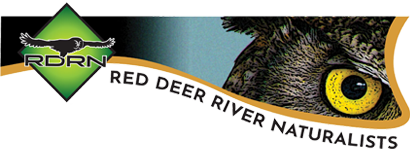City of Red Deer Weed Survey
Over several summers (2005 – 2008) RDRN systematically collected information on exotic weeds and other potentially invasive plant species in the city’s natural areas. Several hundred sites were inventoried at least once.
To see locations of some weeds mapped in the City of Red Deer, please click on the names below. You must have Google Earth™ installed on your computer to see these.
(For a free copy of Google Earth™, please click here: Google Earth)
When you click on a name, you will be asked if you want to:
- Open or Save the file.
- Click on Open.
- This will take you to a new window with Doc in it.
- Double click “DOC” and it will open Google Earth.
RDRN’s Weed Inventory for Red Deer
Using Google Earth to display information:
Google Earth is all about turning map layers on and off. All the layers are displayed when the program opens. Uncheck the box beside “Weed Inventory” to clear the screen and then check the box beside a single species to display its information layers.
How to view the information for a single species:
For most species there is an array of dots that represent sample sites throughout the city.
Each dot will be one of four colours:
- White – X (not detected)
- Yellow – P (present) (species was present within 50 meters of the sample site)
- Orange – C (common) (species was present within 10 meters of the sample site)
- Red – A (abundant) more than 100 stems or flower heads within 10 meters of the sample site
- Note that the X, P, C, and A layers can also be turned off individually.
How to interpret the information collected at a single survey site:
Left click with your mouse on the dot. A bubble will open up and display the following information:
- Occurrence density (X, P, C, or A)
- Date of sample
- Observer’s initials
- GPS coordinates (UTM)
- Site exposure to sunlight
- Codes for the principle tree, shrub and ground layer species.
If a site has been sampled twice, two dots will appear.
New and uncommon species:
Some of the more uncommon species are not represented on the 100 meter grid. Yellow Clematis for example is only represented by a coloured dot wherever it was observed.
The following species have been recorded in our inventory. For more information about each species and for a large photo of each, please click on the species name:
 |
Absinthe Wormwood (Artemisia absinthium) |
 |
American Elm (Ulmus americana) |
 |
Asparagus (Asparagus officinalis) |
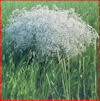 |
Baby’s Breath (Gypsophila repens) |
 |
Bird Vetch (Vicia cracca) |
 |
Bull Thistle (Cirsium vulgare) |
 |
Burdock (Arctium minus) |
 |
Caragana (Caragana arborescens) |
 |
Cicer’s Milkvetch (Astragalus cicer) |
 |
Common Tansy (Tanacetum vulgare) |
 |
Common Toadflax (Linaria vulgaris) |
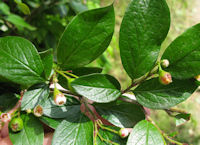 |
Cotoneaster (Cotoneaster frigidus) |
 |
Creeping (Canada) thistle (Cirsium arvense) |
 |
Creeping Bellflower (Campanula rapunculoides) |
 |
European Mountain Ash (Sorbus aucuparia) |
Field Scabious (Knautia arvensis) |
|
 |
Green Ash (Fraxinus pennsylvanica) |
 |
Himalayan Impatiens (Impatiens glandulifera) |
 |
Manitoba Maple (Acer negundo) |
 |
Mullein (Verbascum thapsus) |
 |
Oxeye Daisy (Chrysanthemum leucanthemum syn. Leucanthemum vulgare) |
 |
Sea Buckthorn (Hippophae rhamnoides) |
 |
Scentless Chamomile (Tripleurospermum perforatum syn. T. inodorum) |
 |
Sow Thistle (Sonchus arvensis) |
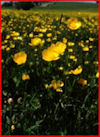 |
Tall Buttercup (Ranunculus acris) |
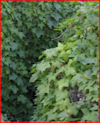 |
Wild Cucumber (Echinocystis lobata) |
 |
White Cockle (Silene latifolia) |
 |
Yellow Clematis (Clematis tangutica) |
What does it all mean?
Some of these plants have been declared noxious (e.g. Scentless Chamomile) or prohibited noxious (e.g. Himalayan Impatiens) under the Weed Control Act . Some of them are invasive agricultural or horticultural plants that are causing significant damage to native plant communities (e.g. Cicer’s Milkvetch, Cotoneaster). Other exotic escapees may only be harmless curiosities. Only time will tell what their effects will be.
Things you can do:
- Be responsible for everything you plant. Traditional garden plants as well as exciting new introductions may also have a dark side. Prolific seeds and extensive rhizomes allow them to spread very quickly into neighbouring properties and public areas if they are not properly placed and controlled.
- Be aware of “uncommon” weeds. Many regulated weeds (e.g. Purple loosestrife) are not established in Red Deer yet, or they haven’t reached your part of the city. By being vigilant, we can make sure they never get a chance to establish.
- Be suspicious of any new plant that is expanding rapidly in your local park. Many unregulated exotic plants (e.g. Caragana) are extremely invasive and almost impossible to remove.
- Report out breaks of invasive plants to the city’s parks department. You can also help the RDRN’s weed mapping program by sending us new locations of exotic invasive plants. E-mail Tony for details.
- Let other citizens know that you think our city’s natural parks and native plant communities are a heritage worth protecting and preserving.
Thanks to:
- Adam Blake – GIS services
- Tony Blake – inventory data collection
- Nick Epp-Evans, Eileen Ford – inspiration
- Bill Heinsen – web mastery
- Mike Mah – data collection, data base
- Nick Saik – data collection
- Jim Posey – Rogues Gallery
- Alberta Native Plant Council
- Alberta Invasive Plants Council
